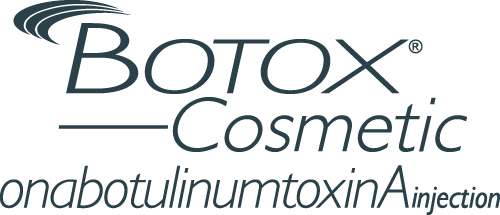Sclerotherapy has long been recognized as a highly effective treatment for varicose and spider veins, offering both aesthetic and medical benefits. However, while much attention is given to the procedure itself, what happens after Sclerotherapy often receives less focus. Understanding the post-treatment journey is crucial for anyone considering or having undergone the procedure, as it directly influences the final results and overall satisfaction. At Derrow Dermatology, we believe that successful outcomes are not only achieved through expert application of the treatment but also through comprehensive patient education on what to expect during the recovery phase.
This article will guide you through the intricacies of the post-Sclerotherapy experience, offering insights that go beyond the usual advice, ensuring that you are fully informed and prepared for each step of your recovery.
What is Sclerotherapy?
Understanding the Procedure
Sclerotherapy is a time-tested procedure used to treat varicose and spider veins, particularly in the legs, where these vein issues are most prevalent. The process involves injecting a sclerosing solution directly into the affected veins. This solution irritates the lining of the blood vessels, causing them to collapse and eventually be reabsorbed by the body. Over time, this leads to the veins fading from view, effectively eliminating the unsightly appearance of varicose and spider veins.
What sets Sclerotherapy apart from other vein treatments is its minimally invasive nature combined with its high success rate. Unlike surgical options such as vein stripping, Sclerotherapy doesn’t require general anesthesia or lengthy recovery periods. Instead, it’s typically performed in-office, with patients often resuming normal activities the same day. The procedure is adaptable, allowing for the treatment of both small spider veins and larger varicose veins in a single session.
Who is a Good Candidate?
Sclerotherapy is not a one-size-fits-all solution, and understanding who the ideal candidates are is crucial for achieving the best results. Generally, individuals with small to medium-sized varicose veins or spider veins are considered good candidates. It is especially beneficial for those who experience discomfort, swelling, or leg cramps due to their vein issues, as the procedure not only improves the appearance of the veins but can also alleviate these symptoms.
However, there are certain conditions under which Sclerotherapy might not be recommended. For example, individuals who are pregnant, have a history of blood clots, or suffer from certain circulatory disorders may not be suitable candidates. Additionally, the procedure may be less effective on very large varicose veins, in which case alternative treatments might be suggested.
At Derrow Dermatology, we conduct a thorough evaluation to determine if Sclerotherapy is the right treatment for each patient, taking into account their medical history, the severity of their vein issues, and their overall health. This personalized approach ensures that every patient receives the most appropriate and effective care.
The Immediate Aftermath
What Happens Right After Treatment
Immediately following Sclerotherapy, patients can expect a few temporary but noticeable changes. The treated veins may initially appear more pronounced or darker, which can be surprising, especially for those unfamiliar with the procedure’s early effects. This is a natural response to the sclerosing solution and indicates that the treatment is working as intended. There may also be mild discomfort in the treated areas, similar to a slight burning or tingling sensation, but this typically subsides within a few hours.
In addition to these initial effects, patients might observe localized redness and swelling around the injection sites. These reactions are common and usually resolve on their own without the need for additional treatment. It’s important to remember that Sclerotherapy is designed to initiate a process within the veins that unfolds over time, so immediate results should not be expected.
Common Side Effects and How to Manage Them
While Sclerotherapy is generally well-tolerated, there are some common side effects that patients should be aware of and prepared to manage:
- Bruising: This is perhaps the most common side effect, with small bruises forming at the injection sites. These typically fade within a week or two.
- Swelling: Mild swelling is expected and can be managed by wearing compression stockings as recommended by your dermatologist.
- Temporary skin discoloration: Some patients may experience brownish discoloration over the treated veins, which usually fades within a few months.
- Itching: A mild itching sensation may occur at the treatment sites, which can be alleviated with over-the-counter antihistamines if necessary.
Managing these side effects effectively is crucial for a smooth recovery, and following your dermatologist’s post-treatment instructions can help minimize discomfort and enhance the overall results.
Sclerotherapy Recovery Timeline
The recovery timeline after Sclerotherapy is a gradual process that varies depending on the individual’s condition, the extent of the treatment, and how well they follow post-procedure care instructions. Within the first 24 hours, patients are usually encouraged to walk and maintain normal activities, which helps in promoting blood flow and reducing the risk of complications like blood clots. However, it’s advisable to avoid strenuous exercise or heavy lifting during this initial period.
During the first week, you might notice the veins becoming harder and more prominent before they start to fade. This is a sign that the body is beginning to reabsorb the treated veins. Compression stockings are typically worn during this time to aid in reducing swelling and ensuring proper healing. As the days progress, bruising and any minor discomfort should start to diminish.
In the weeks following the procedure, the treated veins will gradually disappear, with the most noticeable improvements usually occurring between four to six weeks. Some patients may require additional treatments to achieve their desired results, especially if larger veins were involved. Follow-up appointments are essential during this period to monitor progress and address any concerns that may arise. The final outcome can often take several months to fully manifest, but with proper care, the results of Sclerotherapy can be long-lasting and satisfying.
Post-Sclerotherapy Care Instructions
Compression Garments
One of the most crucial aspects of post-Sclerotherapy care is the use of compression garments. These specially designed stockings apply consistent pressure to the treated areas, which helps reduce swelling, prevent blood clots, and promote better blood flow. Compression garments also support the vein walls as they heal, reducing the likelihood of the treated veins refilling with blood. Patients are generally advised to wear these garments continuously for the first 24 to 48 hours after the procedure and then during the day for the next one to two weeks. The exact duration can vary based on the individual case, and your dermatologist will provide specific recommendations tailored to your needs.
Activity and Exercise Guidelines
Maintaining light physical activity after Sclerotherapy is encouraged to promote circulation and aid in the healing process. Walking is particularly beneficial and should be done regularly, even on the day of the procedure. However, it is important to avoid strenuous activities, such as running, heavy lifting, or intense aerobic exercises, for at least one to two weeks post-treatment. These activities can increase blood pressure in the veins and may counteract the benefits of the procedure. Swimming and hot baths should also be avoided, as prolonged exposure to heat can lead to vein dilation, potentially compromising the treatment’s effectiveness.
Skincare and Hygiene Tips
Proper skincare is another vital component of post-Sclerotherapy care. Patients should keep the treated areas clean and dry, especially during the first few days after the procedure. Mild soap and lukewarm water are recommended for washing the skin. It’s important to avoid any harsh skincare products, such as exfoliants, retinoids, or alpha hydroxy acids, which can irritate the skin and delay healing. Additionally, patients should protect the treated areas from direct sunlight to prevent hyperpigmentation. Using a broad-spectrum sunscreen with an SPF of 30 or higher is advisable whenever the treated areas are exposed to the sun.
Managing Potential Complications
Recognizing and Addressing Complications
While Sclerotherapy is generally safe and effective, it’s important for patients to be aware of potential complications and how to address them promptly. One of the most common issues is hyperpigmentation, where the skin over the treated vein may darken temporarily. This condition typically resolves on its own within a few months, but patients can help minimize it by avoiding sun exposure and following proper skincare guidelines.
In rare cases, more serious complications can arise, such as the development of blood clots, also known as deep vein thrombosis (DVT). Signs of DVT include significant pain, swelling, and warmth in the treated leg. If you experience these symptoms, it’s crucial to seek medical attention immediately. Allergic reactions to the sclerosing agent, though uncommon, can also occur and may present as severe itching, swelling, or hives. Again, prompt consultation with your dermatologist is essential.
When to Contact Your Dermatologist
It’s important to maintain open communication with your dermatologist after Sclerotherapy. You should contact your provider if you notice any unusual symptoms, such as persistent pain, large areas of swelling, signs of infection like redness and warmth at the injection site, or if the treated veins do not begin to fade as expected. Early intervention can prevent minor issues from developing into more serious complications, ensuring a smoother recovery and better overall results. At Derrow Dermatology, we are committed to providing ongoing support to our patients, ensuring that any concerns are addressed quickly and effectively.
Long-Term Results and Maintenance
When to Expect Visible Results
The long-term results of Sclerotherapy can be incredibly rewarding, but patience is key. While some veins may begin to fade within a few weeks, most patients will see the full effects of their treatment between three to six months. It’s important to remember that larger veins may take longer to disappear, and multiple sessions might be necessary to achieve optimal results. The gradual fading of treated veins is a sign that the body is effectively reabsorbing the damaged vessels, leading to clearer, more aesthetically pleasing skin.
Maintaining Results and Preventing Recurrence
To maintain the results of Sclerotherapy and prevent the recurrence of varicose or spider veins, adopting a proactive approach to vein health is essential. Regular physical activity, particularly low-impact exercises like walking or swimming, promotes healthy circulation and reduces the pressure on your veins. Maintaining a healthy weight and avoiding prolonged periods of standing or sitting can also minimize the risk of new vein issues developing.
Wearing compression stockings occasionally, especially during long flights or extended periods of inactivity, can further support vein health. Additionally, a balanced diet rich in flavonoids, found in foods like citrus fruits, berries, and leafy greens, can strengthen blood vessel walls and improve circulation.
Conclusion
Sclerotherapy is a highly effective treatment for eliminating varicose and spider veins, offering both cosmetic and health benefits. While the procedure itself is straightforward, understanding and following the proper aftercare is crucial to achieving the best possible results. By being aware of what to expect immediately after treatment, adhering to post-care instructions, and recognizing the signs of potential complications, you can ensure a smooth recovery and long-lasting improvement.
At Derrow Dermatology, we are dedicated to guiding you through every step of your Sclerotherapy journey, from the initial consultation to follow-up care. Our expert team is here to support you, ensuring that you achieve clear, healthy skin with confidence. To learn more about Sclerotherapy or to schedule an appointment, we invite you to visit us or call 407-389-2020. Your path to beautiful, vein-free skin starts here.











